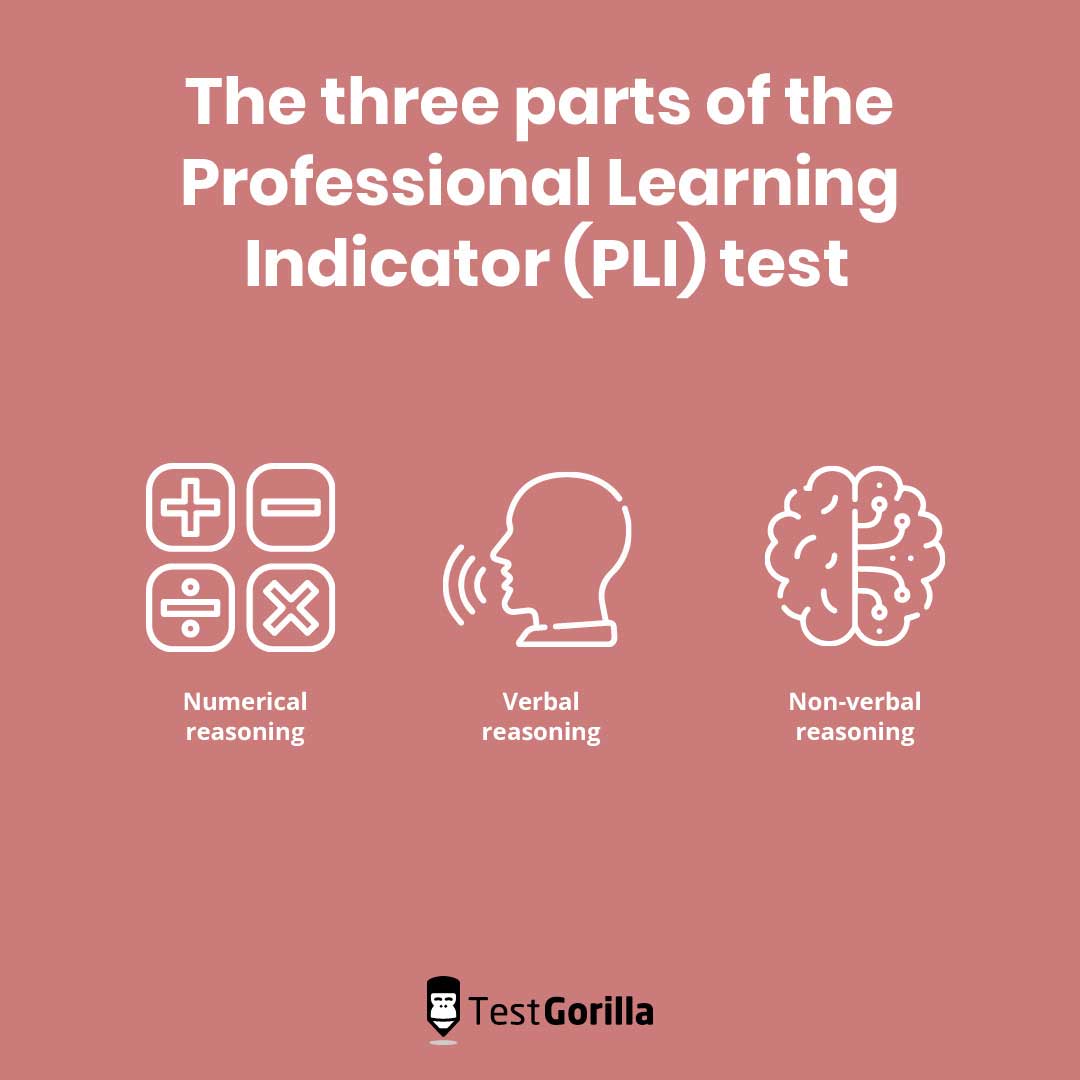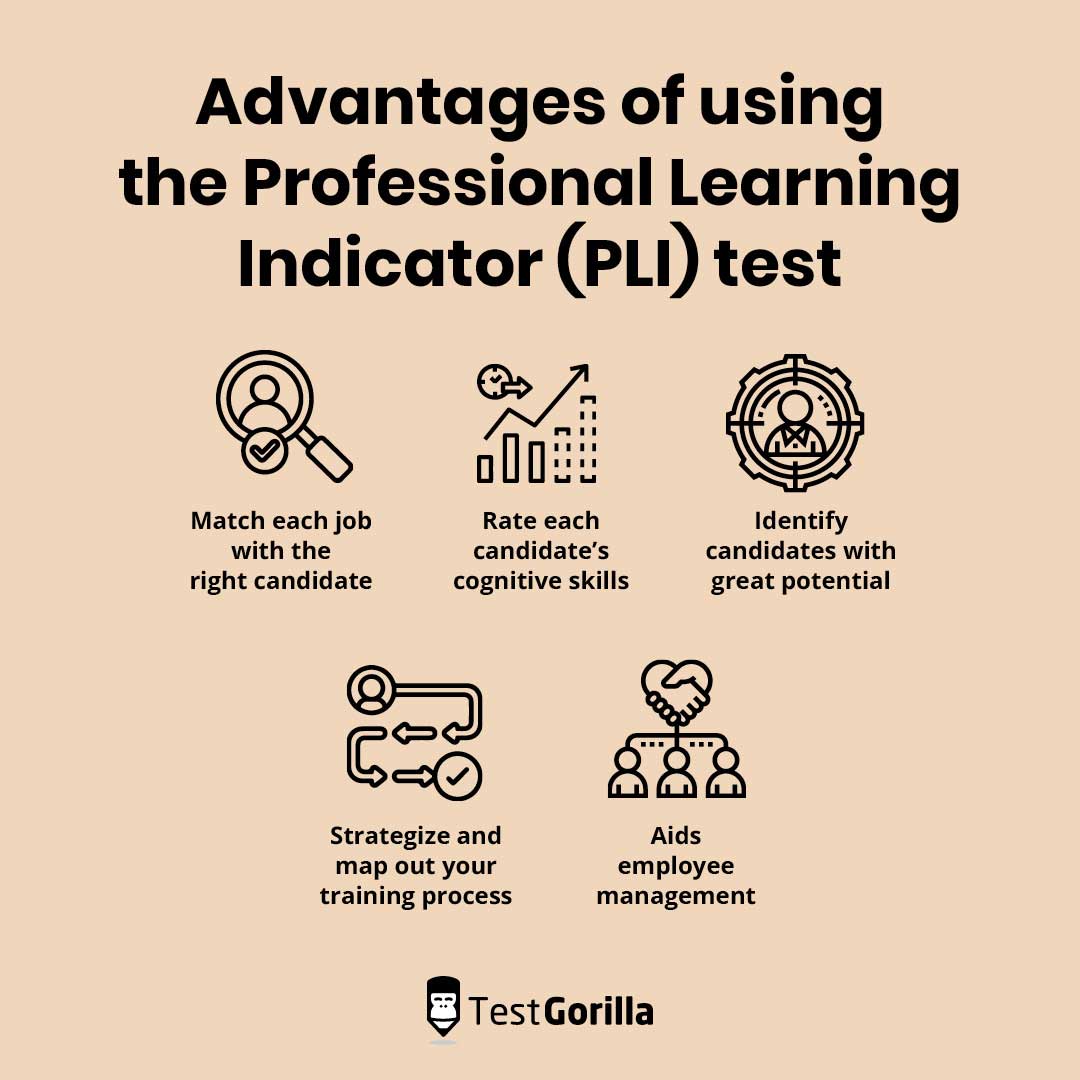For most recruiters, the most difficult part of hiring is validating if candidates have the skills they claim. Unfortunately, resumes don’t serve as adequate proof of soft skills like critical thinking.
The good news is that with a Professional Learning Indicator test, you can easily spot skilled candidates in no time. Organizations use the Professional Learning Indicator test to gauge candidates’ cognitive ability and ultimately determine if they are suitable for the role.
The Professional Learning Indicator test includes questions that assess not only technical skills but also whether candidates can think outside the box to provide solutions to various problems.
In this article, we will describe the Professional Learning Indicator test in detail, exploring its features, uses, and advantages. We’ve also included a tip on how you can create your own Professional Learning Indicator test to help you identify the best candidate for the role.
Table of contents
What is the Professional Learning Indicator test?
The Professional Learning Indicator (PLI) test is a 12-minute assessment that companies administer to candidates during or before the interview process to test how well they can find solutions to even the toughest tasks in a limited amount of time.
The Professional Learning Indicator test is also known as the Predictive Index Learning Indicator (PILI) test. It is composed of 50 questions that focus on cognitive ability and critical-thinking skills.
Since candidates are expected to answer these 50 questions within 12 minutes, many of them see the test as highly challenging and difficult to pass. However, those who can apply a deeper level of critical thinking should do well on the test.
Depending on the open job role, the passing mark for the Professional Learning Indicator test ranges from just 18 to 20 points. So a good test score would be around 20 points.
The Predictive Index Learning Indicator test focuses more on candidates’ cognitive skills and how well they can manage their time, so they don’t have to get an extremely high score.
Because the test assesses candidates’ critical thinking, time management, and general reasoning ability, it’s a great way to predict how well they will perform after securing the job.
Aside from that, hiring managers consider the Professional Learning Index test to be one of the best tools for evaluating candidates’ learning capacity and how quickly they can grasp new ideas.
Parts of the Professional Learning Indicator test
The Professional Learning Indicator test has three distinct parts: numerical reasoning, verbal reasoning, and non-verbal reasoning. Below, we will discuss each section of the Professional Learning Indicator test and its features.
1. Numerical reasoning
This section of the Professional Learning Indicator test assesses candidates’ knowledge of numerical operations and their applications. It includes questions on logical reasoning, algebra, and word problems.
Consequently, the candidates must apply their numeracy skills and problem-solving techniques to pass this section.
2. Verbal reasoning
In this section, the questions check how well the candidates understand and draw information from words. The test evaluates verbal reasoning skills using questions on synonyms, antonyms, and word analogies.
The verbal reasoning section also assesses candidates’ communication skills with questions on reading, writing, listening, and speaking.
3. Non-verbal reasoning
The non-verbal reasoning section of the Professional Learning Indicator test examines candidates’ ability to identify relationships between entities, spot patterns, and think critically to provide solutions to problems.
The questions in this section are more practical and give you an idea of how candidates may react to situations that might arise in the course of their work.
Advantages of using the Professional Learning Indicator test
The Professional Learning Indicator test is highly beneficial to companies that want to hire only the best candidates for a particular role.
It not only points you toward those with great cognitive skills but also gives you a better understanding of the candidates before you recruit them. Here are five advantages of using the Professional Learning Indicator test in your hiring process:
1. Enables you to match each job with the right candidate
Although hiring candidates with the right technical skills for the role is necessary, it’s also crucial for the applicants to be able to handle the non-technical aspects of the job. In fact, 92% of talent professionals believe that non-technical skills are just as or more important than technical skills.
As such, finding the best person for any role requires you to check their technical and non-technical skills. The Professional Learning Indicator test enables you to evaluate these skills and ultimately match each job with the best candidate for the role.
2. Enables you to rate each candidate’s cognitive skills
The Professional Learning Indicator test assesses how well the candidates can find solutions to problems even in unfavorable conditions. Its three-part structure makes it a versatile and reliable method for gauging candidates’ cognitive abilities.
3. Helps you identify candidates with great potential
Using the results of the Professional Learning Indicator test, you can easily gauge how each candidate would perform in the role and which applicant has the potential you’re looking for.
Candidates who do well on the Predictive index learning indicator test have superb cognitive skills and will perform more efficiently than those who don’t pass.
4. Gives you an opportunity to strategize and map out your training process
Once you know the level of your candidates’ cognitive skills, you can strategize and map out your training process to match their abilities. This helps you avoid undertraining or overtraining your new recruits and saves time and money.
5. Aids employee management
The Professional Learning Indicator test tells you more about the candidates you want to hire so that you know how they would react to certain situations and handle various issues in the workplace. This supports effective employee management.
Create your own Professional Learning Indicator test with TestGorilla
More than 82% of organizations use pre-employment tests in their hiring processes. This means that a large percentage of businesses use tests like the Professional Learning Indicator test in their recruitment.
By building a Professional Learning Indicator test and incorporating it into your hiring process, you can ensure that each candidate you recruit has everything needed to perform excellently in their role.
With TestGorilla’s vast library of pre-recruitment tests, you can easily build a Professional Learning Indicator assessment from scratch. Our library is equipped with tests for numerical, verbal, and non-verbal reasoning to help point you toward candidates with the best cognitive skills.
Create an account with TestGorilla for free today to begin your hiring journey.
Related posts
Hire the best candidates with TestGorilla
Create pre-employment assessments in minutes to screen candidates, save time, and hire the best talent.
Latest posts
The best advice in pre-employment testing, in your inbox.
No spam. Unsubscribe at any time.

Hire the best. No bias. No stress.
Our screening tests identify the best candidates and make your hiring decisions faster, easier, and bias-free.
Free resources
This checklist covers key features you should look for when choosing a skills testing platform
This resource will help you develop an onboarding checklist for new hires.
How to assess your candidates' attention to detail.
Learn how to get human resources certified through HRCI or SHRM.
Learn how you can improve the level of talent at your company.
Learn how CapitalT reduced hiring bias with online skills assessments.
Learn how to make the resume process more efficient and more effective.
Improve your hiring strategy with these 7 critical recruitment metrics.
Learn how Sukhi decreased time spent reviewing resumes by 83%!
Hire more efficiently with these hacks that 99% of recruiters aren't using.
Make a business case for diversity and inclusion initiatives with this data.





















